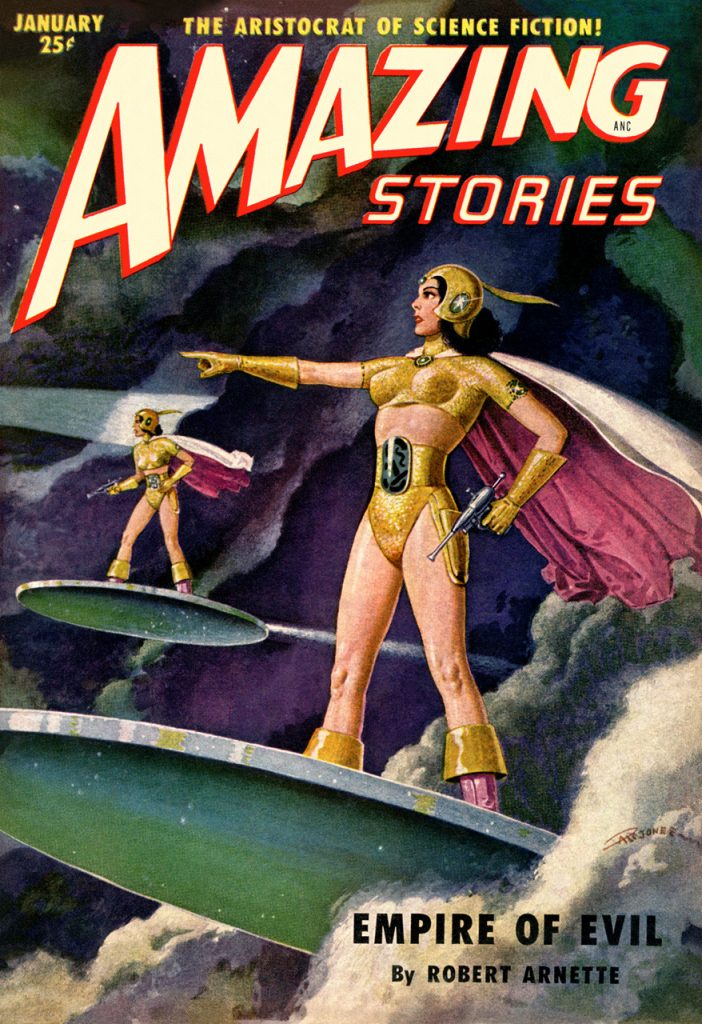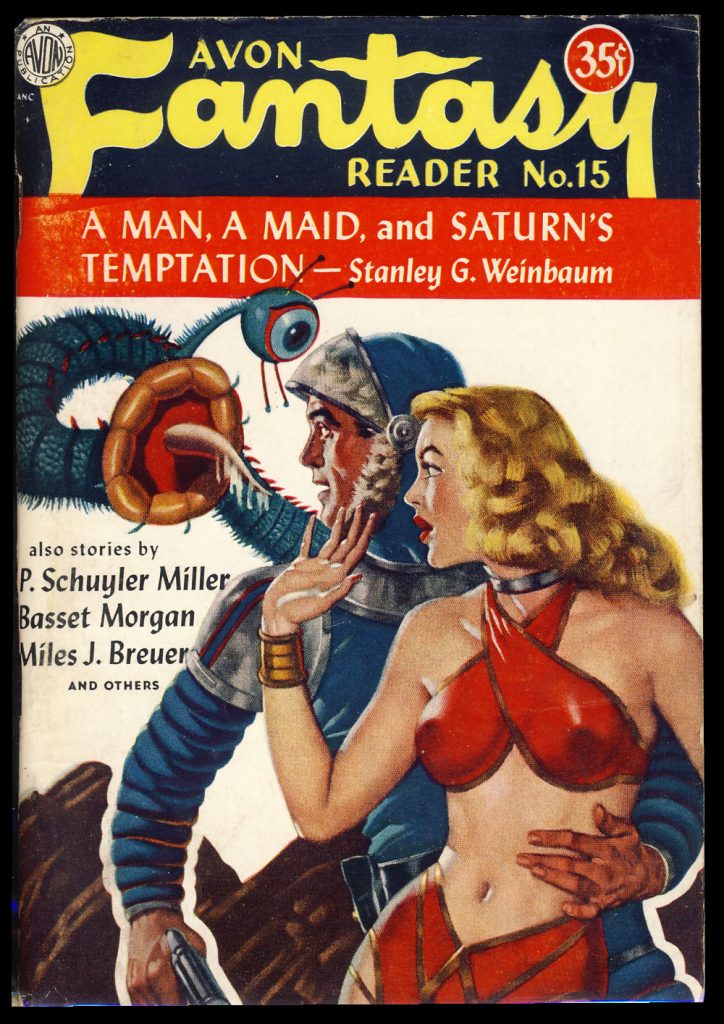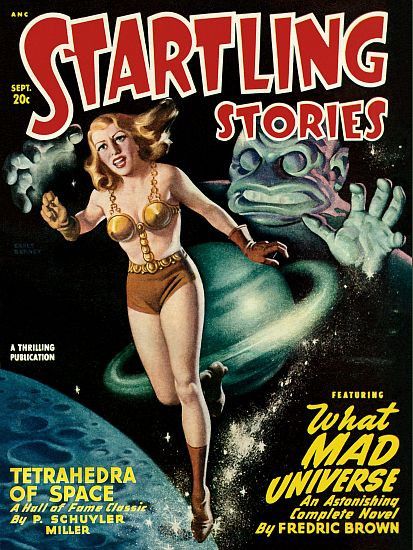SENSOR SWEEP: Unqualified Fabricators, Civilized Virtues, Dreadful Warnings, and Ugly-ass Trousers
Monday , 5, June 2017 Sensor Sweep 3 Comments The Inklings (The Telegraph) Secret theme behind Narnia Chronicles is based upon the stars, says new research — “Dr Ward made his discovery in 2003 after reading The Planets, a poem by Lewis which refers to the influence of Jupiter in ‘winter passed / And guilt forgiv’nl – a theme echoed in The Lion, The Witch and The Wardrobe. He claims Lewis’ knowledge of medieval history, of which he was one of the leading scholars, made him familiar with the characteristics attributed to the seven planets during the period. Each of these planets gives one of the books its theme. Prince Caspian, for example, is a story ruled by Mars, who is manifested by soldiery and battle, while The Voyage of the Dawn Treader focuses on the Sun, with its light and gold themes. In The Horse and His Boy, based on Mercury, the planet that rules the star sign Gemini and is associated with the power of communication, the characters include twins and a talking horse.”
The Inklings (The Telegraph) Secret theme behind Narnia Chronicles is based upon the stars, says new research — “Dr Ward made his discovery in 2003 after reading The Planets, a poem by Lewis which refers to the influence of Jupiter in ‘winter passed / And guilt forgiv’nl – a theme echoed in The Lion, The Witch and The Wardrobe. He claims Lewis’ knowledge of medieval history, of which he was one of the leading scholars, made him familiar with the characteristics attributed to the seven planets during the period. Each of these planets gives one of the books its theme. Prince Caspian, for example, is a story ruled by Mars, who is manifested by soldiery and battle, while The Voyage of the Dawn Treader focuses on the Sun, with its light and gold themes. In The Horse and His Boy, based on Mercury, the planet that rules the star sign Gemini and is associated with the power of communication, the characters include twins and a talking horse.”
From the Comments (Save Versus All Wands) Jeffro Johnson’s Appendix N: Preview to a Review — “I bought Appendix N based on Jeffro’s blog posts and commentary at his site. Jeffro’s analysis jibes with my reading experiences in the 60s/70s/80s. There is a distinct break in the historical canon in the late 70s/early 80s that marries up with changes in inventory tax laws and availability of older pulp works. Jeffro traces links from the Pulp canon to possible places in D&D where Gygax may have used these influences. He did a very competent job of it on the whole. The trope about ‘Appendix N is just a list of Gary’s favs’ is a failed one, based on what Gary himself says and an analysis of the works themselves compared to the game.”
Appendix N (ODD74 Boards) The Literary History of D&D — “So you had called him a clueless, unqualified fabricator. That’s not the only less than civil criticism that had been lobbed at Jeffro’s direction before he arrived either. The idea that Jeffro ‘set the tone,’ rather than you (and others) is contrary to the facts. On this record, it was his obligation to deescalate the situation? You’re obliged to be courteous and substantive; he’s not required to persuade you to be so. It is not reasonable to call someone a clueless, unqualified fabricator and then complain that he’s not engaging with your ostensibly more constructive criticisms.”
Appendix N (Armed and Dangerous) Reading racism into pulp fiction — “But I didn’t begin thinking really critically about race in pulp fiction until I read Tarzan and the Castaways a few years ago and noticed something curious about the way Burroughs and his characters used the adjective ‘white’ (applied to people). That is: while it appeared on the surface to be a racial distinction, it was actually a culturist one. In Burroughs’s terms of reference (at least as of 1939), ‘white’ is actually code for ‘civilized’; the distinction between ‘civilized’ and ‘savage’ is actually more important than white/nonwhite, and non-Europeans can become constructively ‘white’ by exhibiting civilized virtues.”
Gaming (Barbarian Book Club) Playing Twilight Struggle: The Cold War 1945-1989 — “Twilight Struggle is such a fantastic game that days after my last play I still think of strategies and actions I could have played differently. It captures the frenetic reactionary nature of the cold war, where the powers didn’t directly go at each other but play an endless game of back and forth through influence, political maneuvering, and sometimes covert and overt military action. The game simulates the action perfectly. One minute the U.S. is focusing on protecting Israel from the Arab League when a slew of revolutions turn South and Central America into Communist hangouts thanks to Fidel and his buddy Che.”
 Appendix N (Adventures Fantastic) The Women Other Women Don’t See — “Not to put to fine a point on it, Brackett moved on from writing for the pulps because her talent was recognized by someone who could pay her what her stories were worth. Brackett also mentored some kid named Ray Bradbury, who completed ‘Lorelei of the Red Mist’, which she was working on when she got the assignment of The Big Sleep. He not only finished her story but also went on to have a minor career in the field and openly acknowledged Brackett’s influence on his own writing. Maybe you’ve heard of him as well.”
Appendix N (Adventures Fantastic) The Women Other Women Don’t See — “Not to put to fine a point on it, Brackett moved on from writing for the pulps because her talent was recognized by someone who could pay her what her stories were worth. Brackett also mentored some kid named Ray Bradbury, who completed ‘Lorelei of the Red Mist’, which she was working on when she got the assignment of The Big Sleep. He not only finished her story but also went on to have a minor career in the field and openly acknowledged Brackett’s influence on his own writing. Maybe you’ve heard of him as well.”
Appendix N (The Frisky Pagan) A Vancian-inspired (re)interpretation of magic-users and heathen idol-worshippers (i.e. clerics) — “Unlike some modern interpretations (probably inspired by D&D video games) where spells are memorized, and THEN the character goes to sleep and wakes up with his mind automatically filled with awesome powers, here the process is the opposite and follows the Cugel-Vance logic more closely. You sleep, and THEN (if you want) you memorize the spells (something that may take you a whole day if playing a very high-level character.) It doesn’t say when or how many. You could, in fact, not memorize a single spell and leave your mind ’empty.'”
D&D (Semper Initiativus Unam) Megadungeons, Bosses, and Goals — “On a given delve, a megadungeon needs to be able to accommodate players who have spent 50 sessions going into the ruins, and players who are only going in this once. Maybe they’re going together down to level 5A. If that’s the case, level 5A needs to be interesting as an exploration goal in itself, without regard to whether the PCs ever go down to level 6A. That doesn’t mean either that every room in your dungeon needs to have a full array of what’s interesting about it, or that dungeon levels shouldn’t tie together in any way; neither of those is interesting. But what it does mean is that every level and sub-level needs to be a goal in itself, that it’s worth going into it, and to be interesting if the PCs go there. All of this breaks down if the sub-level is just leading up to a boss monster.”
Movies (Just the Caffeine Talking) Obligatory Star Wars Post — “If you look at the big-budget, high-profile science fiction films of the decade before 1977, what do you see? The Man Who Fell to Earth, The Stepford Wives, Phase IV, The Terminal Man, Zardoz, The Day of the Dolphin, Soylent Green, Solaris, Westworld, Logan’s Run, The Andromeda Strain, A Clockwork Orange, Planet of the Apes (and sequels), THX 1138 (by some guy named Lucas), Colossus: The Forbin Project, 2001, and Charly. And what do these movies have in common? They’re all VERY SERIOUS. Nearly half the list are post-apocalyptic stories; half are Dreadful Warnings about technology out of control. Only four deal with space exploration at all, and in all of those contact with extraterrestrial life is shown as either dangerous, incomprehensible, or both. In short, the future — and the Universe — are simply no fun.”
Steampunk Month! (The Writings of Jon Del Arroz) Welcome To #Steampunk Month! — “The webcomic Girl Genius really inspired a lot of folk to love the genre, providing a really compelling tale that still runs to this day. Some cool authors came out of this Steampunk boom, but by 2013-2014 the cultural fad had sort of died down. You didn’t hear about Steampunk much in pop culture anymore, though there certainly were other publications that came about. Looking at the twitter accounts of popular Steampunk magazines/ideas, that peak in 2011-2013 was really where it was at. So what happened?”
Star Wars (RMWC Reviews) Heroes, Failures, and The Force Awakens — “I’m sure there’s something to be said about cultural mores and so on in regards to the difference between what the Expanded Universe did with the characters in the 90s-00s compared to now. There’s also something to be said about how everybody wants to write about a plucky group of rebels overthrowing an evil government to replace it with a good government, but nobody ever seems to write about a plucky group of heroes fighting against incredible odds to protect the good government that the previous rebels installed.”
Movies (Rawle Nyanzi) Wonder Woman (review) — “Let’s not mince words or lie about the appeal — They. Looked. Hot. The opening greets the viewer with enough skimpy outfits and panty shots to satisfy any man, and the Amazons’ athleticism only adds to the effect. Once we get to the outside world, Wondie still shows out in a nice-looking leotard and leather miniskirt. ‘Practical armor’ can die in a fire — Wonder Woman is a superhero, and superheroes should look bold, expressive, and yes, even sexy. In a movie landscape where all the girls wear ugly-ass trousers, Wonder Woman is a breath of fresh air.”
RPGs (Walker’s Retreat) Revealed Preferences in Gaming: Focus — “And no, the answer is NOT to become narrowly-focused in turn. That’s one of the big reasons D&D 4th Edition was a pile of [garbage], and that bad influence lingers not only in D&D5, but also in Pathfinder. The answer is to take that understanding of why those gamers who want the focused alternative do so, and let them go; your audience wants the full potential of the medium, not to tolerate a pile of baggage until they get their itch scratched.”
 Star Wars (ODD74 Boards) Chapters and Authors in Appendix N — “Splinter of the Mind’s Eye takes us closer to Star Wars’s pulp roots than do the later movies and the later Star Wars books. Clear your mind of all things Star Wars, forgetting everything you know. Then read back-to-back the 1976 Star Wars novelization (which was ghost-written by Alan Dean Foster) and Splinter of the Mind’s Eye. It is a refreshing take on Star Wars, a much older take. Both books were written in 1976, before the first movie was even released.”
Star Wars (ODD74 Boards) Chapters and Authors in Appendix N — “Splinter of the Mind’s Eye takes us closer to Star Wars’s pulp roots than do the later movies and the later Star Wars books. Clear your mind of all things Star Wars, forgetting everything you know. Then read back-to-back the 1976 Star Wars novelization (which was ghost-written by Alan Dean Foster) and Splinter of the Mind’s Eye. It is a refreshing take on Star Wars, a much older take. Both books were written in 1976, before the first movie was even released.”
D&D (Dyvers) Sober Thoughts about the Newest Adventure from Wizards of the Coast — “I fully understand that the Forgotten Realms is the engine that pulls the Dungeons & Dragons train right now, but I’m also aware that the only reason that is the case is because they have spent the better part of the last twenty years pushing that setting to the fore while minimizing all their other settings. They could have just keep all these re-imagined adventures in Greyhawk and they would have sold just as well while reinvigorating the setting for a new generation of players – or they could have moved us into Eberron and done something really interesting with all that settings lore.”
Something I’ve noticed perusing the 0D&D Proboards…some people are entirely too invested in the schism between Dave Arneson and Gary Gygax. I think some of the most rabid hysteria regarding your book is that they perceive it as denigrating Arneson, and like the Soviet Politburo, it is not enough that Arneson be respected, but Gygax must be disrespected.
Then there is aggressive virtue signalling (I have a daughter!) and, the out and out rudeness by one of the moderators. It’s honestly not a very good look for them.
Do you know if anyone at Dragonsfoot has reviewed your book?
that Walker piece is heavy
🙁